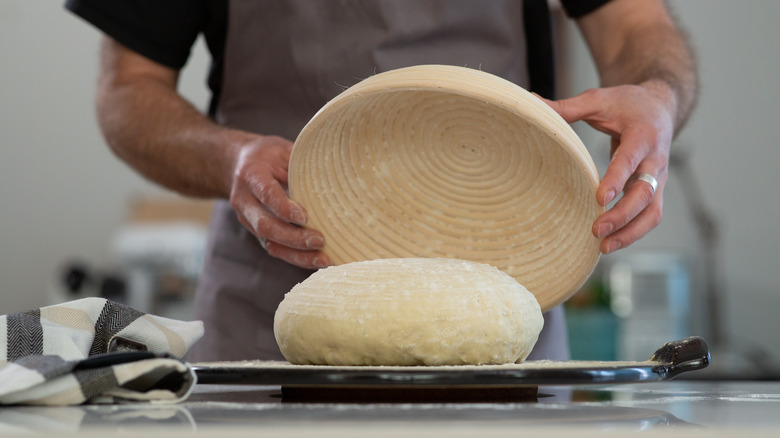The Countertop Appliance That Will Speed Up Bread Proofing
When baking bread at home, many recipes call for proofing. As MasterClass instructs, proofing is the step that helps activate yeast in dough to make leavened breads. Traditionally, bread proofing would happen in a bowl placed at room temperature, explains Taste of Home. But for bakers making bread in cold kitchens or trying to knead dough in winter months, proofing may become more of a hassle than for those working inside heated homes or producing freshly-baked bread during the summer.
When the environment is warm, bread dough can take anywhere from one to four hours to proof, notes The Perfect Loaf. The dough recipe and the temperature of the room in which proofing occurs can impact how long it takes for the dough to rise. When it is cold enough, some doughs may need to rest overnight to proof fully. Fortunately, bakers have options when it comes to speeding up the proofing process and creating warm environments for the dough to thrive.
Turn your slow cooker into a proofer
Stick with us here, consider using your slow cooker to speed up the proofing process, explains Taste of Home. Filling the slow cooker with water and setting the temperature to the lowest setting will result in a pool of warm water. Close the top, but flip the lid so that the flat part of the lid is facing upwards. Then, place a towel on top of the flat surface and rest your bowl of dough on top of this make-shift proofing contraption. The heat emanating from the warm water inside will help the dough rise.
When the dough is finished proofing and ready for baking, it should spring back slowly after it is touched with a finger, explains America's Test Kitchen. The texture of the dough should be soft and fluffy, adds Challenger Breadware. Don't have a slow cooker and need a warm environment to proof the dough you are ready to bake? You can also try the microwave method.

